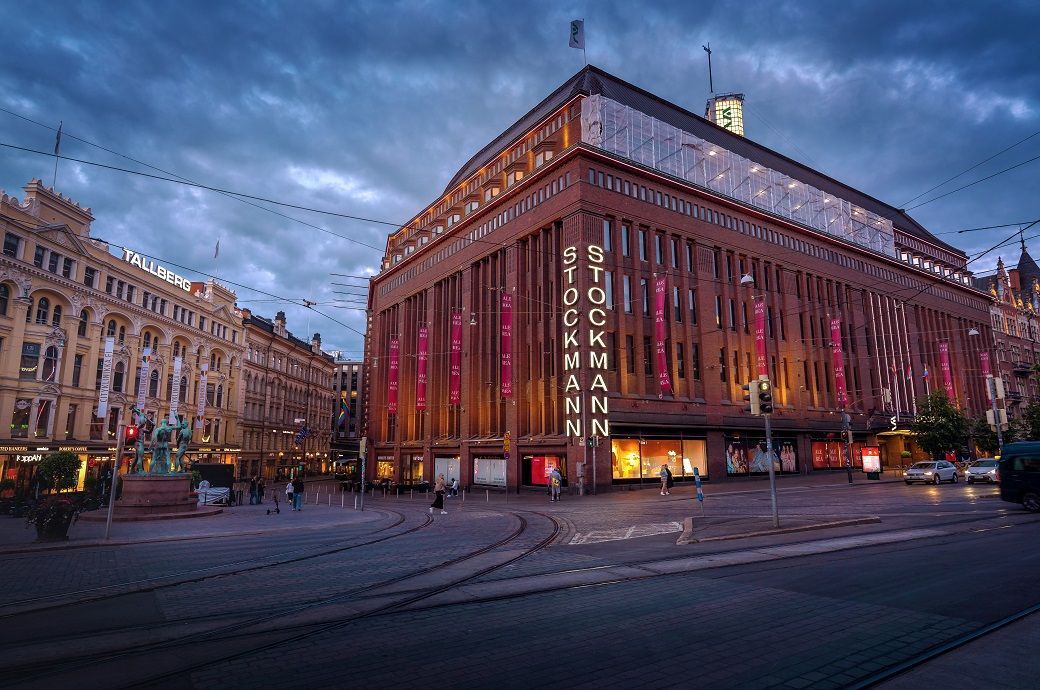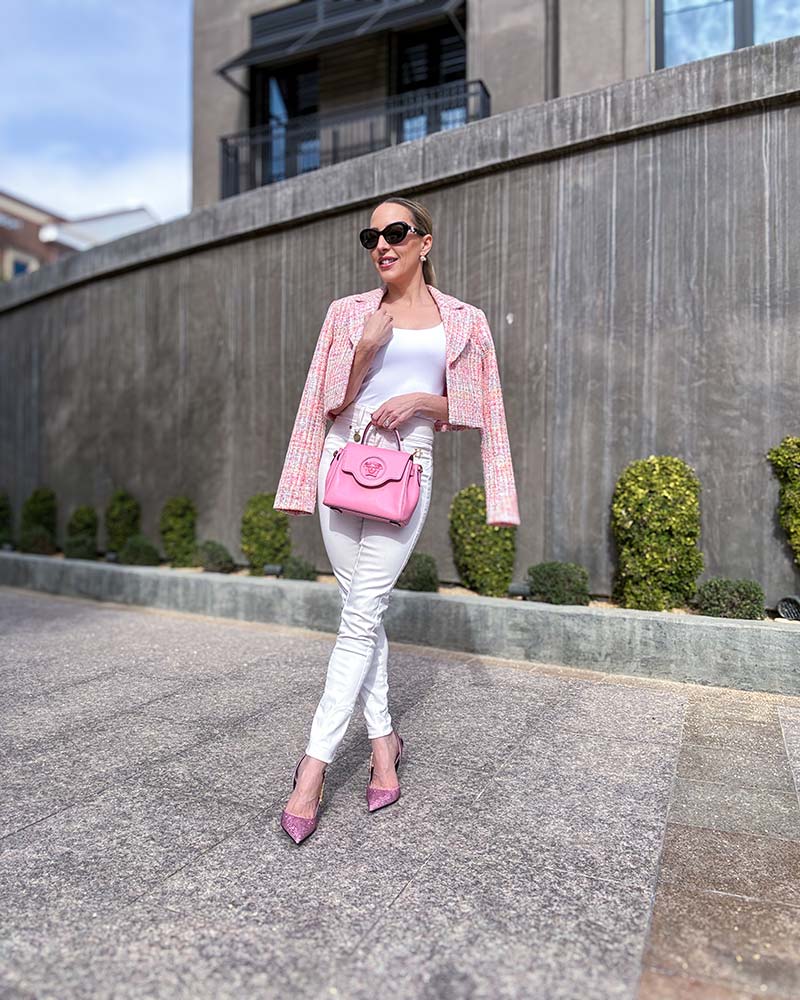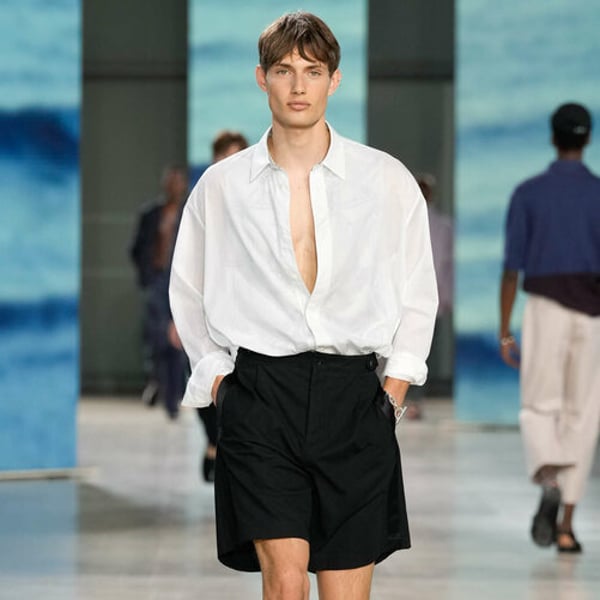Published
October 7, 2025
Silhouettes lengthen or gain volume; the ornamentation shines with sparkling details; the wardrobe becomes more sophisticated. This romantic and slightly glamorous vein came to the fore on the eighth day of the Paris shows dedicated to Spring-Summer 2026. On Monday, numerous collections focused on a new feminine elegance, redefined by Sacai, Zimmermann, Agnès b. and Ungaro, among others.
Unusual constructions, layers and material mixtures. For her Spring-Summer 2026 collection, presented on Monday at the brand's new headquarters (an old building with a large glass roof, formerly occupied by Balenciaga on rue Cassette, in the 6th arrondissement), Japanese designer Chitose Abe returns to her basics, revisiting the key ingredients behind Sacai's success.
Trench coats, denim, knitwear, outerwear, the white shirt, the little black dress and more. She examined the archetypes of women's wardrobes, breaking them down before reassembling them into covetable hybrids. Black and white reappeared in voluminous silhouettes, finished off with Oxford shoes with oversized tassels that gave an 18th-century air to the outfit. The mood was epitomized by supermodel Naomi Campbell in a gorgeous sleeveless tuxedo with a train.
Each piece was distinctive, almost unique in its construction, details or fusion of materials, but seemed easy to wear and conveyed a sense of freedom and movement. With Sacai, fashion is, more than ever, a game, and this season the house explored a new “inversion” technique: the bottom sections of classic garments are lifted to fasten high on the body, creating unexpected shapes.
For example, black pants were lifted, anchored to the shoulders of a tuxedo jacket that becomes an oval cape. The same trick was applied to the hem of a long white shirt, tied through buttonholes at the shoulders, and to the panels of long canvas skirts, which rose to the waist to create peplums and puffed shapes. Elsewhere, a trench coat became a petticoat and a shirt, tuxedo and skirt became one.
The movement was omnipresent in blouses and skirts that were wavy or flared godet. A pop of lime yellow livened up a long black and white patchwork dress. Leather jackets and denim pieces were disassembled and recomposed into puzzle-like garments with rounded contours. Later, minidresses emerged from a mix of prints (stripes, polka dots, flowers), while waterproof canvas merged with tuxedo satin. Tweed dresses melted into cascades of fringe, completing a stunning collection full of energy and invention.

Absent from the runways since 2019, Agnès b., whose real name is Agnès Troublé, made her triumphant return on Monday at Paris Fashion Week with a grand manifesto portraying her half-century in fashion. The occasion also marked her return to fragrances, with a new fragrance written by designer and perfumer Isaac Sinclair. “Agnès b. Paris Le Parfum” will be released on October 14. Made in France, it embodies “discretion, timeless elegance and the freedom to be yourself.”
Almost 90 models, including 15 men, walked the long catwalk installed at the Collège des Bernardins, accompanied by a live concert. Principal dancer Hugo Marchand opened the show with an aria from Rameau's “Les Indes Galantes,” performed on piano by Martin Beau. What followed was a seemingly endless parade of the creations that have marked the brand's history, with numerous archival pieces, reworked models and new releases.
The first part was dedicated to her ultra-light dresses made of fine cotton, including butter muslin, very airy and washed “so that they shrink a little”, as well as light linen. There were petticoats, including the reworked “tango” model, dungarees and mechanic's overalls, apron dresses and crepe tailoring. Not forgetting the artist t-shirts, the straight Elvis pants, the button-front dresses with Peter Pan collars, the harpsichord shirt (without buttons). Without forgetting, of course, polka dots, plaid fabric, denim, unisex leather jackets, the satin used to make cargo pants and an 18th-style linen frock coat, from the designer's favorite era.
At 83, Agnès can still teach tailoring lessons, with her precision in cutting and construction, not to mention her meticulous attention to armholes. The secret of its success? He has always remained faithful to his style since his debut in 1975, never giving up on it. Composed of casual, easy-to-wear pieces alongside more elaborate ones, each imbued with quintessential Parisian elegance, Agnès b. The wardrobe covers all daily needs, from morning to night, addressing everyone, men and women of all ages, with a timeless style but with character that continues to captivate for five decades.

The pastel décor, the cries of seagulls, the soft waft of the brand's next fragrance in stores, Zimmermann set a decidedly summery tone, immersing us this season in the bohemian and artistic atmosphere of Lavender Bay in the seventies. At that time, this industrial corner of Sydney Harbour, with its disused warehouses wedged between a Luna Park and the railway, came to life and attracted an exuberant arts community.
It is this carefree effervescence that Australian designer Nicky Zimmermann brilliantly translated into her collection, modernizing the theme at the same time. A fresh and joyful spirit pervaded the show, which was dominated by vibrant colors (emerald green, petrol blue, orange and pink), soft floral prints in the style of David Hamilton and a carefree charm.
Blouses and long dresses were by turns ethereal with waves of ruffles or demure with white cotton lace. Pants were worn loose or very flared. Zip-front jumpsuits, worn without a zipper, gave models (with dark sunglasses, sandals or clogs) a house painter's touch. Elegant pleated pants, with a low waist, revealed a high-cut swimsuit. The long dresses slid sinuously down the body. Women ranged between a headscarf and sparkling gold jewelry.
A collection that should prove successful, like the previous ones, as Zimmermann is one of the few brands that continues to grow in today's market with its accessible luxury, which appeals far beyond its native Australia.

The treasures of the Louvre served as a starting point for Ungaro's collection, particularly Ingres' “L'Odalisque.” “In this collection there is orientalism, with a mix of cultures, but also a 'cabinet of curiosities' side. I wanted to celebrate femininity and freedom, imagining these women going from the Louvre to the flea market, mixing all kinds of influences,” explained artistic director Kobi Halperin.
The result was a collection that was both rich and delicate, focused on lightness through silky fabrics with floral prints, gypsy-style chiffon dresses, more sensual versions in fluid satin and clouds of ostrich feathers, which gave an airy touch to the ensemble. Various lace and guipure garments (dresses, as well as jackets, skirts, shorts and pants) let the air circulate with a fresh boudoir spirit.
The wardrobe is meant to be versatile, with interchangeable pieces to mix and match from day to night. Choose from gorgeous shirt dresses, light summer dresses in chiffon or cotton, monochrome or printed, little tweed jackets to pair with leopard shorts and the classic suit with its elegant double-breasted jacket, in white or gorgeous brocade.
This article is a machine translation.
Copyright © 2025 FashionNetwork.com All rights reserved.












